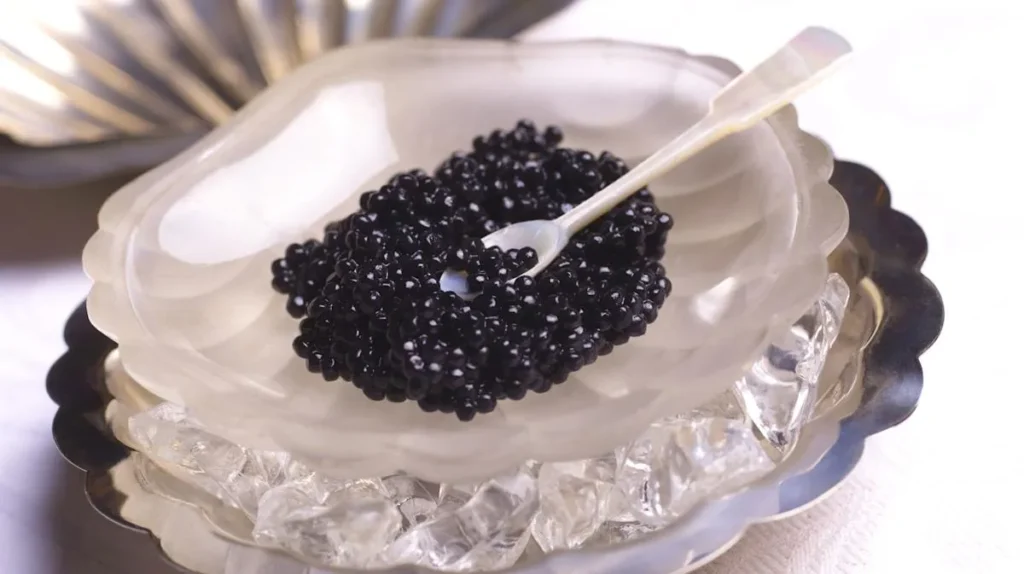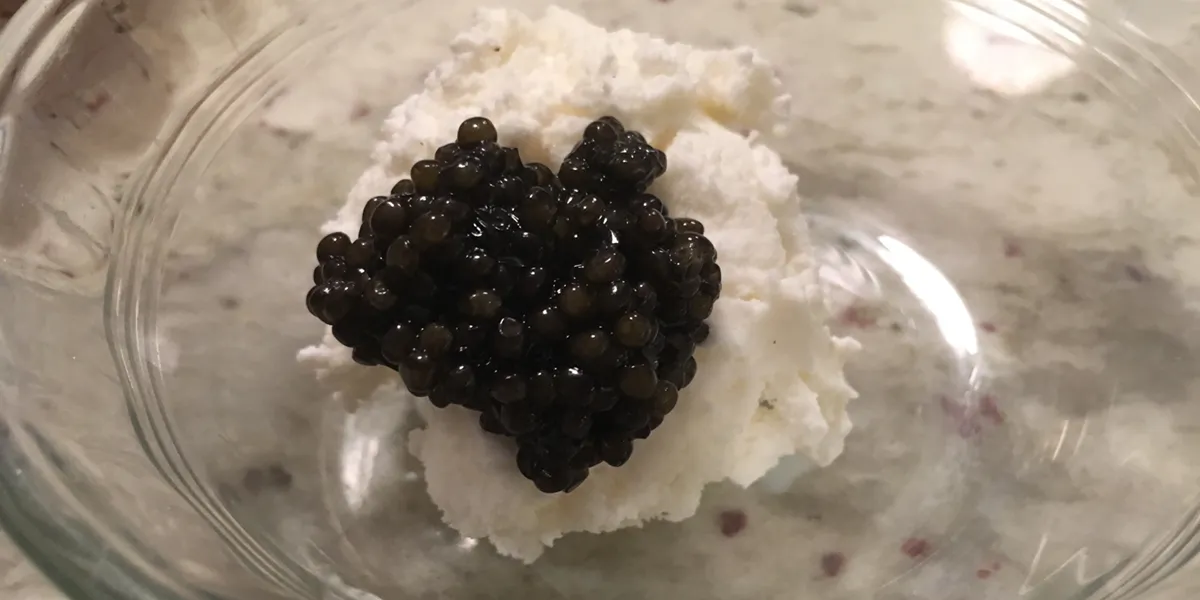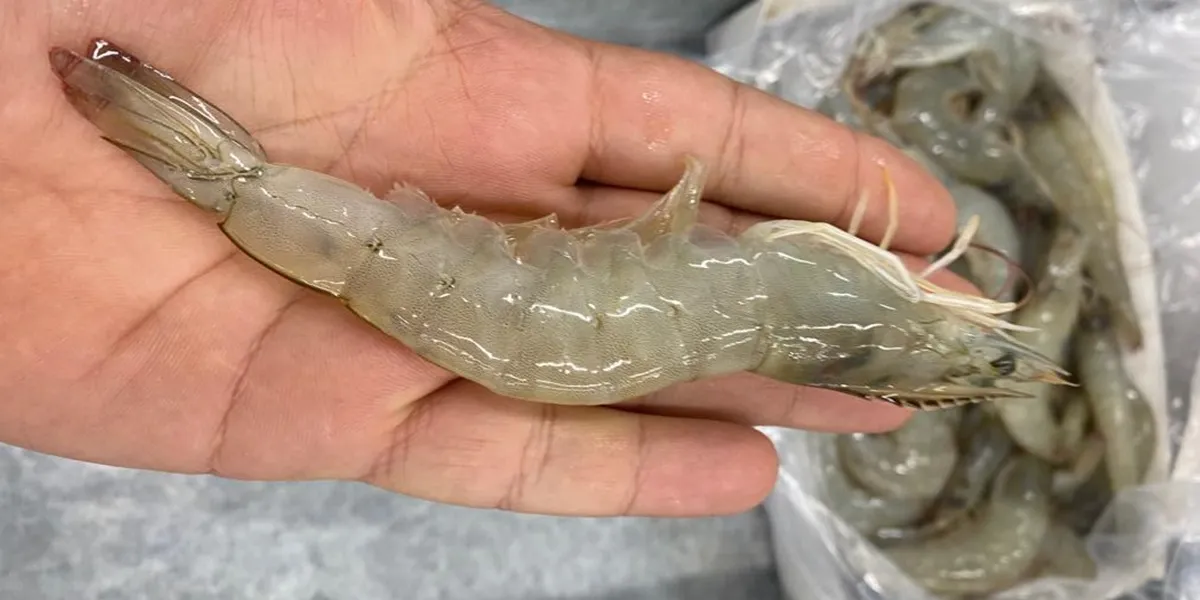Think You Know Caviar? Think Again.
Caviar has long been cloaked in mystery — often seen as a rare indulgence with little known beyond its luxurious reputation. But beneath the glossy surface lies a world of variety, nutritional richness, and cultural complexity that most people never explore. From the buttery Beluga to the nutty notes of Ossetra, each type of caviar offers a distinct flavor profile and nutrient composition. Rich in omega-3 fatty acids, antioxidants, and essential vitamins, caviar is more than a delicacy — it’s a functional food with real health potential.
In this article, we’re diving deep to debunk the biggest myths about caviar and reveal what makes each type unique in both taste and nutrition. If you’ve ever been curious about what’s true (and what’s not) when it comes to caviar, stay with us — the facts may surprise you.
Caviar Isn’t Always Expensive: Discover the Real Pricing Factors
When people hear the word “caviar,” they often picture a luxury product reserved for exclusive gatherings and elite dining. But What is caviar , really? At its core, caviar refers to the salt-cured eggs of sturgeon, a prehistoric fish species prized for its unique roe. While it has long been associated with wealth and extravagance, the truth behind caviar pricing is far more nuanced.
Several factors influence the cost of caviar, and not all of them have to do with exclusivity. The species of sturgeon plays a major role — Beluga, Ossetra, and Sevruga each produce caviar with different textures, flavors, and harvesting challenges. Farming conditions also matter. Environmentally responsible aquaculture practices, water purity, and sustainable harvesting methods directly impact quality and availability. In fact, many reputable producers now cultivate caviar in controlled environments, improving accessibility without compromising authenticity.
Geographical origin is another key factor. While regions like the Caspian Sea are historically linked to premium caviar, today’s market includes high-quality roe from Europe, the U.S., and even parts of Asia. Lastly, processing methods — including aging, salting, and packaging — influence not just taste but also shelf stability, further affecting price.
Understanding these pricing variables helps shift perception. Caviar isn’t just about luxury — it’s about craftsmanship, biodiversity, and sustainability. With more accessible options now available, caviar has found its way into broader culinary circles, allowing more people to experience its refined taste and benefits. As we explore deeper, you’ll see how caviar is evolving beyond its elite image.
Caviar and Fish Eggs Aren’t the Same Thing: Learn the Key Differences
One of the most common misconceptions in the world of fine dining is the belief that all fish eggs are caviar. In reality, this is far from true. While caviar is indeed a type of fish egg, not all fish eggs can be called caviar. This distinction is not only culinary but also legal and cultural, especially when viewed through the lens of international food standards and evolving Caviar Market Trends.
Caviar specifically refers to the salt-cured roe of sturgeon fish, primarily sourced from species like Beluga, Ossetra, and Sevruga. These eggs are prized for their delicate texture, complex flavor, and nutritional richness. In contrast, other fish roe — such as salmon (ikura), trout, lumpfish, and flying fish (tobiko) — are categorized separately and often serve different culinary purposes. These alternatives may offer vibrant colors and unique textures but do not match the subtlety or prestige of true sturgeon caviar.
The distinction also lies in the processing methods. Authentic caviar undergoes minimal handling and is traditionally “malossol,” meaning lightly salted to preserve its natural qualities. Most other roes are pasteurized, flavored, or artificially colored — processes that significantly alter both taste and texture.
As global consumers become more educated, Caviar Market Trends reflect a growing awareness of these differences. Gourmet buyers increasingly seek out authentic sturgeon caviar, distinguishing it from other roe products marketed under misleading labels. Regulatory bodies like the FDA and the EU have also stepped in to protect the definition of “caviar,” ensuring truth in labeling and consumer trust.
Understanding this distinction is essential for culinary enthusiasts, chefs, and health-conscious consumers alike. Knowing what sets caviar apart helps you make informed choices, elevating your appreciation for this rare and refined delicacy.
Caviar Is Not Just a Luxury Food: Explore Its Nutritional Benefits
Caviar has earned its place in the world of fine cuisine, but beyond the elegance and ritual lies a powerful source of nutrition. This often-overlooked fact is drawing the attention of both health professionals and everyday consumers. When you explore the Types of caviar available — from Beluga and Ossetra to Kaluga and Siberian — you find more than differences in taste. Each variety contains distinct nutritional profiles that offer real health benefits.
First and foremost, caviar is packed with omega-3 fatty acids, which support heart health, reduce inflammation, and improve cognitive function. In fact, a single serving of sturgeon caviar can deliver a substantial dose of these essential fats, comparable to fatty fish like salmon. Caviar is also rich in vitamins A, D, E, and B12, all of which are essential for immune function, energy metabolism, and skin health.
Additionally, caviar contains high-quality protein and minerals like selenium, iron, and magnesium. Selenium acts as a powerful antioxidant, while iron supports red blood cell formation and energy production. For individuals with iron-deficiency anemia, caviar can serve as a supplemental dietary source.
Moreover, the low-carb, low-sugar nature of caviar makes it suitable for keto and low-glycemic diets. It’s also naturally gluten-free, making it an excellent option for those with dietary restrictions.
By understanding the types of caviar and their respective health properties, consumers can make smarter choices — not just for indulgence but for well-being. Caviar is no longer just a celebratory dish for the rich. It’s a nutrient-dense food that fits into a balanced, health-conscious lifestyle. Exploring its nutritional value reveals how tradition and modern science intersect in a single spoonful.

Black Caviar Isn’t Always the Best: Color Doesn’t Equal Quality
In the world of gourmet food, black caviar has long held the spotlight as the ultimate symbol of quality. But does darker always mean better? Not quite. In truth, caviar comes in a range of colors — from golden to grey, amber to olive — and color alone is not a reliable indicator of quality. One of the finest examples challenging this belief is Iranian caviar, known globally for its complex flavor and exceptional craftsmanship, regardless of its color.
Caviar color is primarily determined by the sturgeon species, its age, diet, and environment. For instance, Ossetra caviar can range from pale gold to deep brown, while Beluga is typically steel-grey or charcoal. The pigmentation doesn’t affect taste in a linear way; in fact, some of the most sought-after caviars are light in color due to their unique buttery or nutty flavor profiles.
Moreover, flavor and texture are more influenced by processing methods, freshness, and the health of the fish than by hue. Expert producers — like those crafting Iranian caviar — prioritize the quality of roe handling, salting techniques (especially “malossol”), and storage practices. These elements are crucial in preserving the nuanced flavor that caviar connoisseurs seek.
It’s also important to note that modern chefs and sommeliers look beyond color when selecting caviar for pairing. They focus on burst, creaminess, and aftertaste — qualities not dictated by shade.
As global appreciation for caviar evolves, consumers are learning to judge it by its full spectrum of characteristics, not just its appearance. Discarding the “black is best” myth opens the door to discovering a richer, more diverse world of flavor, with Iranian caviar standing proudly among the finest examples available.
Caviar Doesn’t Have to Be Eaten With a Pearl Spoon: Modern Serving Myths
For years, culinary tradition dictated that caviar must only be eaten with a pearl spoon — a rule that many believed was essential for preserving its delicate flavor. While there’s some truth behind the idea, modern science and evolving dining practices suggest otherwise. The original concern was that metal spoons, especially those made from silver or aluminum, could oxidize upon contact with caviar, leaving a metallic aftertaste. Hence, non-reactive materials like mother-of-pearl, bone, and gold were traditionally favored.
However, contemporary kitchens now use food-safe stainless steel, glass, or ceramic — all of which maintain the integrity of caviar’s flavor just as effectively. As long as the utensil is non-reactive, the experience remains pure and enjoyable. This modern shift opens the door for more accessible serving options without compromising quality.
Beyond utensils, other myths persist, such as always serving caviar on blinis with crème fraîche. While delicious, caviar also pairs well with neutral bases like boiled potatoes, soft eggs, or even served solo to highlight its texture and salinity. Modern chefs prioritize flavor preservation and creativity over outdated rituals.
Moreover, this relaxed approach supports broader culinary experimentation. Caviar can enhance dishes ranging from sushi to pasta and elevates even simple ingredients when used thoughtfully. This evolving perspective also encourages more people to explore its versatility without intimidation.
Understanding the flexible ways to serve caviar also reminds us of its underlying nutritional value. The Health benefits of caviar — including high omega-3 content, vitamin B12, selenium, and antioxidants — remain consistent regardless of how it’s served. In the end, enjoying caviar should be less about rigid rules and more about savoring a premium ingredient in ways that feel authentic, modern, and delicious.
Farmed Caviar Isn’t Inferior: How Modern Aquaculture Is Changing the Game
There was a time when only wild-caught sturgeon caviar was considered authentic, and farmed alternatives were dismissed as lesser in both quality and taste. But today, that narrative has dramatically shifted. Thanks to advances in sustainable aquaculture, farmed caviar has not only caught up but, in many cases, surpassed wild varieties — all while helping preserve endangered sturgeon populations and aquatic ecosystems.
Modern aquaculture employs highly controlled environments where water purity, temperature, and sturgeon health are rigorously maintained. These systems allow for precise monitoring of the fish’s growth, diet, and egg development, ensuring consistent texture, size, and taste of the roe. As a result, High quality caviar can now be sourced from eco-conscious farms in Europe, the United States, and beyond — without harming wild sturgeon or violating environmental regulations.
Farmed caviar also benefits from reduced contamination risk. Unlike wild sources, which can be exposed to pollutants and heavy metals, farm-raised sturgeon are fed curated diets and live in clean, closed-loop systems. This results in safer, cleaner, and fresher caviar, meeting or exceeding international food safety standards.
Furthermore, technological innovations in egg harvesting allow for “no-kill” or minimally invasive extraction, aligning with modern ethical concerns around sustainability and animal welfare. Some producers even offer traceability certificates, proving origin and farming practices — a level of transparency rarely possible in traditional sourcing.
In blind taste tests conducted by caviar experts, farmed options often rank alongside or above their wild counterparts. Texture, salinity, and aroma are carefully refined, resulting in a premium experience.
Ultimately, the shift toward high quality caviar from farmed sources reflects a larger movement in food culture — one that values sustainability, transparency, and innovation. Far from inferior, today’s farmed caviar represents the future of this time-honored delicacy.
Caviar Doesn’t Have to Be Russian or Iranian to Be Authentic
Russia and Iran have historically dominated the caviar conversation, especially with access to the Caspian Sea — home to the Beluga, Ossetra, and Sevruga sturgeon species. However, authenticity in the caviar world is no longer confined to geographic origin. In recent years, the global expansion of sustainable aquaculture has allowed new regions to enter the caviar market with impressive results.
Countries like France, Italy, Germany, and the United States now produce some of the highest-quality caviar available. These farms use advanced techniques and strict water quality controls to raise sturgeon species in environments that closely mimic their natural habitats. The result is caviar with rich, nuanced flavor profiles, rivaling — and in some cases exceeding — those of traditional producers.
Authenticity is about more than location. It’s defined by species purity, farming practices, processing methods, and adherence to international standards. Farms in non-Caspian regions often raise the same sturgeon species — such as Siberian (Acipenser baerii) or Ossetra (Acipenser gueldenstaedtii) — using ethical and ecologically sound techniques. They salt and age the roe according to classic “malossol” traditions, ensuring flavor integrity.
Moreover, modern caviar consumers are increasingly interested in transparency, sustainability, and taste — rather than the passport of origin. International certifications, environmental standards, and traceable production methods matter more to today’s chefs and connoisseurs than traditional geographic prestige.
As the culinary world continues to evolve, so does our understanding of what makes caviar authentic. Whether it’s from the Rhône Valley in France or Northern California, what truly defines excellent caviar is care, technique, and respect for tradition — not just a Russian or Iranian label.
Caviar Spoils Quickly? Not Anymore With Advanced Preservation Methods
Caviar has long been viewed as a highly perishable delicacy, often requiring rapid consumption and extreme cold storage. While this perception once reflected reality, today’s preservation technologies have transformed how caviar is handled, stored, and enjoyed — without compromising quality.
Modern producers use vacuum-sealing techniques that remove oxygen, significantly extending shelf life while maintaining freshness. This method also prevents oxidation, which can alter the flavor and texture of the roe. Combined with cold-chain logistics — temperature-controlled storage and transport — caviar can now remain safe and delicious for weeks or even months under proper conditions.
Another advancement is gentle pasteurization. Though traditionalists may frown upon heat treatment, low-temperature pasteurization can preserve the delicate nature of caviar while eliminating harmful bacteria. This method is particularly valuable for export and retail, ensuring safety and stability during transit and storage.
Newer packaging materials, like UV-resistant glass jars and BPA-free containers, further shield the product from environmental stressors. Some premium producers also include smart labels with freshness indicators, helping consumers gauge the product’s condition without opening the jar.
These improvements have made caviar more accessible than ever before. Restaurants can now source and store a variety of caviar types without fear of rapid spoilage. Home users can enjoy caviar over multiple occasions, rather than feeling rushed to consume it all at once.
Ultimately, the myth that caviar spoils too quickly no longer holds up in the face of scientific innovation. With proper handling, modern packaging, and improved distribution, consumers can now enjoy fresh, flavorful caviar with peace of mind — a leap forward for both accessibility and enjoyment.
Eating Caviar Is Not Harmful During Pregnancy: What Science Really Says
Pregnancy often brings a long list of dietary restrictions, and seafood — including caviar — is usually met with concern. But what do health experts actually say about eating caviar during pregnancy? According to leading nutritionists and public health organizations, pasteurized caviar consumed in moderation can be both safe and beneficial for expecting mothers.
The key factor here is pasteurization. Fresh, unpasteurized caviar carries a slight risk of listeria or other harmful bacteria, which can be dangerous during pregnancy. However, most commercially available caviar is pasteurized and processed under strict food safety regulations, making it safe for consumption when properly stored and handled.
Beyond safety, caviar also provides nutritional advantages. It’s rich in omega-3 fatty acids — especially DHA — which support fetal brain and vision development. Caviar also contains vitamin B12, iron, and selenium, all of which are essential for both mother and baby. These nutrients help prevent anemia, boost immune function, and aid in cellular growth.
Moderation is important. Because of its sodium content, excessive consumption should be avoided — especially for women managing blood pressure. However, a small serving of pasteurized caviar once or twice a week can be part of a balanced, nutrient-rich diet during pregnancy.
It’s always wise to consult a healthcare provider, but overall, modern science supports the inclusion of safe, high-quality caviar in prenatal nutrition plans. Dispelling outdated fears allows women to enjoy caviar’s flavor and benefits with confidence.
So, the next time you’re wondering whether caviar belongs on a pregnancy-friendly menu, the science says yes — when chosen carefully and enjoyed mindfully.
Conclusion: Caviar Demystified: A Treasure of Taste and Nutrition
Caviar is far more than a status symbol — it’s a biologically rich, diverse food that delivers both exceptional flavor and real health benefits. As we’ve seen, not all caviar is the same: each variety brings its own taste, texture, and nutritional value to the table. Whether you’re exploring it for the first time or refining your palate, understanding the science and tradition behind caviar helps you appreciate it as more than just a luxury.
Let the myths go, and embrace the truth: caviar is a remarkable gift from nature, ready to be experienced and enjoyed with knowledge and intention.




